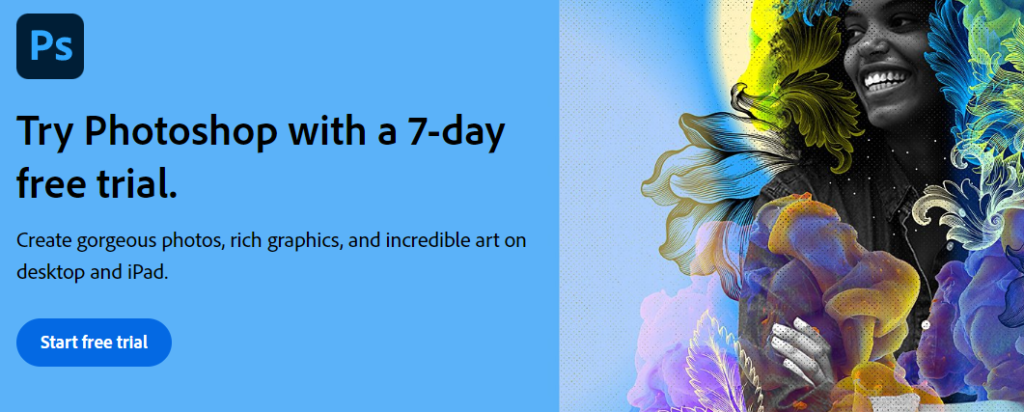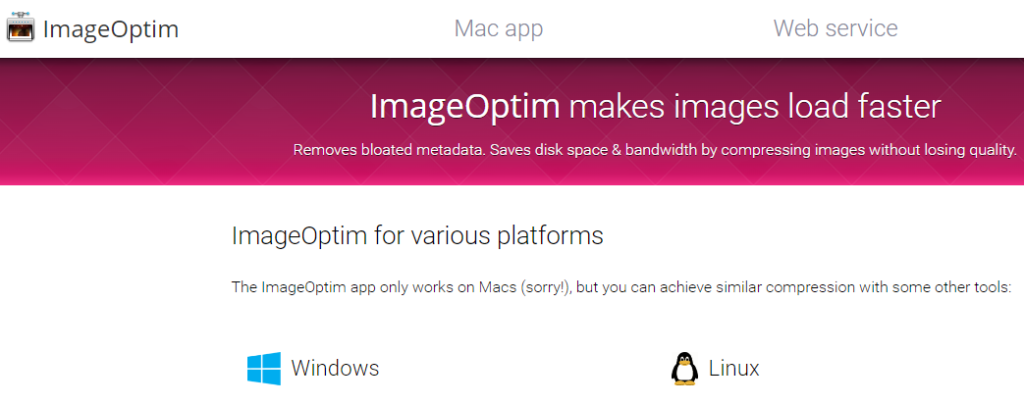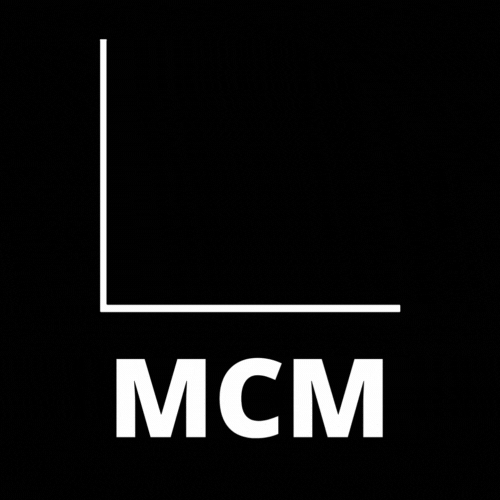In this blog post, we’ll cover the 14 practical tips for image optimization for SEO. We will also cover essential elements of image optimization that will provide you with the knowledge you need to both rank in the SERPS and speed up your website.

Images play a crucial role in enhancing the user experience of your website, but they can also have a significant impact on your website’s search engine optimization (SEO).
Image optimization for SEO involves optimizing the size, format, and other attributes of your images to improve their visibility in search engine results pages (SERPs).
By optimizing your images for SEO, you can improve your website’s ranking in search engine results, increase user engagement, and create a better user experience.
Definition of image optimization for SEO
Image optimization for SEO refers to the process of optimizing the images on your website to improve their visibility in search engine results pages (SERPs).
This involves optimizing various attributes of your images, such as the size, format, alt text, and compression, to make them more accessible and understandable to search engine crawlers.
The goal of image optimization for SEO is to make your website more visible in search engine results, increase user engagement, and improve the overall user experience.
By optimizing your images for SEO, you can improve your website’s search engine rankings and attract more visitors to your website.
Importance of image optimization for SEO
Tip #1 Use High-Quality Images:
Using high-quality images for SEO is crucial for improving user engagement, brand image, credibility, and search engine rankings.
High-quality images can capture the attention of website visitors and create a positive user experience, leading to increased engagement, longer time spent on your website, and lower bounce rates.
Additionally, high-quality images can help establish your brand image and reputation by presenting your products or services in the best possible light. They can also build credibility and trust with website visitors by conveying professionalism and attention to detail.
Furthermore, search engines favor high-quality images that are relevant and useful to website visitors. By using high-quality images, you can improve your website’s search engine rankings and visibility in search engine results pages (SERPs).
This can lead to increased website traffic and more opportunities for your website to convert visitors into customers. Therefore, it’s important to invest in high-quality images that are optimized for SEO to enhance your website’s overall performance and attract more visitors to your website.
Tip #2 Choose the Right Format:
Choosing the right image format is important for SEO because different image formats are suited to different purposes.
For instance, JPEGs are ideal for photographs because they can compress large, complex images without losing too much detail. On the other hand, PNGs are better suited for graphics with transparent backgrounds or simple, vector-based graphics.
By choosing the right format for your images, you can optimize their file size and quality, which can improve your website’s loading speed and user experience.
In addition, choosing the right format can also impact your website’s search engine rankings. Search engines favor high-quality, relevant images that are optimized for fast loading and accessibility.
By using the right format, you can ensure that your images are accessible to search engine crawlers and appear prominently in search engine results pages (SERPs).
This can lead to increased visibility, higher click-through rates, and more opportunities to engage with your target audience.
Moreover, choosing the right format can also impact your website’s mobile performance.
Mobile users have different bandwidths and screen size requirements, so choosing the right format can improve the mobile user experience and increase the chances of converting mobile users into customers.
Therefore, it’s important to choose the right image format for your website to optimize your website’s performance, search engine rankings, and user experience.
Tip #3 Use Descriptive File Names and Alt Text:
Using descriptive file names and alt text for image optimization for SEO is important because it provides context to search engines and improves the accessibility of your website for visually impaired users.
Descriptive file names and alt text should accurately describe the content of the image and include relevant keywords to improve your website’s visibility in search engine results pages (SERPs).
This can help search engine crawlers understand the content and relevance of your images, which can improve your website’s search engine rankings and drive more organic traffic to your website.
Moreover, alt text is essential for improving the accessibility of your website for visually impaired users. Screen readers use alt text to describe the content of images, which can help visually impaired users understand the content of your website.
By including descriptive alt text, you can improve your website’s accessibility and ensure that all users can access the content on your website. This can improve the user experience and lead to increased engagement and conversions.
Using descriptive file names and alt text is also important for improving your website’s overall user experience. Descriptive file names and alt text can provide additional context to users, which can help them understand the content of your website and engage more deeply with your content.
This can lead to longer time spent on your website and higher user engagement, which can improve your website’s search engine rankings and drive more traffic to your website.
So, it’s important to use descriptive file names and alt text for image SEO to improve your website’s search engine rankings, accessibility, and user experience.
Tip # 4 Optimize Image Size and Compression:
Optimizing image size and compression for SEO is crucial because large image files can slow down your website, negatively impacting the user experience and search engine rankings.
Optimizing image size and compression involves reducing the file size of your images without sacrificing quality. This can improve your website’s loading speed, which can lead to a better user experience and higher engagement rates.
Additionally, search engines favor fast-loading websites, and optimizing your image size and compression can improve your website’s search engine rankings. Search engines take into account page speed when ranking websites, and websites with fast-loading times are favored over slower websites.
By optimizing your images for fast loading, you can improve your website’s page speed, which can boost your website’s search engine rankings.
Optimizing image size and compression can also benefit your website’s mobile performance. Mobile users have slower internet speeds, so optimizing your images can improve your website’s performance on mobile devices. This can lead to better user experience and increased conversions.
Also, optimizing image size and compression can also help reduce your website’s bandwidth usage, saving you money on website hosting costs. This can be particularly important for websites with a large number of images or high traffic volumes.
Overall, image optimization for SEO is essential for improving your website’s user experience, search engine rankings, and mobile performance. By reducing image file size without sacrificing quality, you can improve your website’s loading speed, which can lead to increased engagement rates and conversions.
Tools for Image Size and Compression
There are several tools available to optimize image size and compression for SEO.
One such tool is Photoshop, a popular image editing software that includes a variety of image optimization features, such as the ability to adjust image size, compression, and resolution.

Another tool is Canva, a graphic design platform that includes built-in optimization features to reduce image file size while maintaining image quality.

Additionally, TinyPNG is a web-based image optimization tool that compresses images without sacrificing quality.

ImageOptim is another popular tool that allows you to optimize images by reducing file size and compression, while also preserving image quality.

By utilizing these tools, you can optimize your images for fast loading and improved user experience, leading to better SEO results and increased website traffic.
Tip #5 Utilize Image Sitemaps:

Utilizing image sitemaps is good for SEO because it provides search engines with additional information about your images.
Image sitemaps allow you to include details about the images on your website, such as the image subject, location, and captions, which can help search engines understand the content of your images and improve their visibility in search engine results pages (SERPs).
By providing additional information about your images through image sitemaps, you can increase the chances of your images appearing in relevant search queries, leading to increased website traffic and higher engagement rates.
For image optimization for SEO using sitemaps can also improve the accessibility of your website for visually impaired users. By including details about your images, such as alt text and captions, you can ensure that visually impaired user can access the content on your website.
This can improve the user experience and lead to increased engagement rates.
Moreover, image sitemaps can also benefit your website’s mobile performance. Mobile users have different browsing habits and require fast-loading pages, so optimizing your images for mobile devices through image sitemaps can improve your website’s mobile performance and lead to higher engagement rates.
Overall, utilizing image sitemaps is a great way to improve your website’s SEO. By providing search engines with additional information about your images, you can improve their visibility in search engine results pages, increase website traffic, and improve the overall user experience.
Tip #6 Using Responsive Images
Using responsive images is good for SEO because it improves the user experience on different devices, which can lead to increased engagement rates and higher search engine rankings.
Responsive images adjust their size and resolution based on the device and screen size, ensuring that your images look their best on any device.
This can improve the overall user experience, making it easier for visitors to engage with your content and find the information they need.
Additionally, search engines favor websites with responsive design, as it provides a better user experience on different devices. By using responsive images, you can improve your website’s mobile performance, which can lead to higher search engine rankings and increased website traffic.
Using responsive images for image optimization for SEO can also benefit your website’s loading speed, which is a key factor in SEO.
Responsive images reduce the file size of images on mobile devices, which can improve your website’s loading speed and lead to better search engine rankings.
By providing a faster, more efficient website experience for users, you can increase engagement rates and reduce bounce rates, which can positively impact your SEO efforts.
Using responsive images is essential for improving your website’s SEO. By providing a better user experience on different devices, improving your website’s mobile performance, and reducing loading times, you can increase engagement rates, improve search engine rankings, and attract more visitors to your website.
Tip #7 Avoid Stock Images:
Using stock images can have a negative impact on your website’s SEO because search engines favor unique and original content. Stock images are available for anyone to use, which means they are not unique to your website and can be found on many other websites.
This can result in duplicate content issues, which can negatively impact your website’s search engine rankings. Additionally, stock images may not always be relevant to the content on your website. This can confuse search engine crawlers and lead to lower search engine rankings.
Stock images may not reflect your brand identity and messaging. Using stock images can make your website appear generic and impersonal, which can negatively impact user engagement and lead to lower search engine rankings.
Using stock images is not good for image optimization for SEO because they can lead to duplicate content issues, may not be relevant to your content, and may not reflect your brand identity.
Instead, it’s important to invest in creating or sourcing unique images that add value to your content and provide a positive user experience. By using unique images, you can improve your website’s search engine rankings and attract more visitors to your website.
Tip #8 Using Captions helps with image optimization for SEO

Using captions in images can help with SEO because captions provide additional context to search engines about the content of the image. Captions can also be used to include relevant keywords related to the image, which can improve the image’s visibility in search engine results pages (SERPs).
Furthermore, captions can improve the user experience by providing additional information about the image, which can increase engagement rates and reduce bounce rates. Captions can help users understand the context of the image and how it relates to the content on the page.
This can lead to longer time spent on your website and improve user engagement, which can positively impact your website’s search engine rankings.
Moreover, captions can also benefit visually impaired users who use screen readers to access website content. By including captions in images, you can ensure that visually impaired user can access the content of your images and understand their relevance to the content on your website.
This can improve the overall accessibility of your website and lead to increased engagement rates.
Tip #9 Optimize Image Placement:
Optimizing image placement is important for SEO because it can improve the user experience and increase engagement rates, which can positively impact search engine rankings.
The placement of images on a webpage can impact user engagement, page flow, and overall user experience. By optimizing image placement, you can ensure that images are strategically placed to complement the content on the page and improve the overall user experience.
Additionally, search engines consider user engagement metrics, such as bounce rates and time spent on a page, when ranking websites.
By optimizing image placement, you can improve the user experience, which can lead to longer time spent on your website, reduced bounce rates, and increased engagement rates. This can positively impact your website’s search engine rankings.
Tip #10 Using Image Carousels to increase engagement
Using image carousels can improve SEO because they can increase user engagement, reduce bounce rates, and improve website accessibility. Image carousels provide users with a visually engaging way to interact with multiple images, which can increase user engagement and reduce bounce rates.
By providing a more engaging and interactive user experience, you can improve the overall user experience, which can positively impact search engine rankings.
Additionally, image carousels can also improve website accessibility for visually impaired users who use screen readers to access website content.
Image carousels can include alt text and captions, which can ensure that visually impaired user can access the content of the images and understand their relevance to the content on the page. This can improve the overall accessibility of your website and lead to increased engagement rates.
Image carousels can also benefit mobile users who have different browsing habits and require fast-loading pages. By using image carousels, you can reduce the number of images on a webpage, which can improve your website’s loading speed and lead to a better mobile user experience.
This can lead to higher engagement rates and reduced bounce rates, which can positively impact search engine rankings.
Tip #11 Utilize Image File Names that accurately describe the content of the image
Utilizing image file names that accurately describe the content of the image is an important aspect of SEO. Search engines use image file names to understand the content of the image and to determine the relevance of the image to the surrounding text.
By using descriptive image file names that accurately reflect the content of the image, you can improve the visibility of your images in search engine results pages (SERPs).
Using descriptive file names also makes it easier for users to find the image they are looking for through search engines.
If the image file name accurately describes the content of the image, it is more likely that users will find your image when searching for relevant content. This can increase the visibility of your images and drive more traffic to your website.
Using descriptive file names can also improve the accessibility of your website for visually impaired users. Screen readers use file names to describe the content of images, so by using descriptive file names, you can ensure that visually impaired user can access the content of your images and understand their relevance to the surrounding text.
Descriptive file names can also help with local SEO. By including location-specific keywords in your image file names, you can improve the visibility of your images in local search results, which can be particularly useful for businesses with a local focus.
Overall, utilizing image file names that accurately describe the content of the image is essential for improving your website’s SEO. By improving the visibility and accessibility of your images, you can drive more traffic to your website and improve the overall user experience.
Tip # 12 Utilize Thumbnails for large images to improve the website loading speed
Utilizing thumbnails for large images to improve website loading speed is important for SEO because page speed is a key ranking factor for search engines.
Large image files can slow down website loading times, which can negatively impact user experience and search engine rankings. By using thumbnails, you can reduce the file size of large images and improve website loading speed, leading to a better user experience and higher search engine rankings.
Thumbnails are small, low-resolution versions of an image that can be used as a placeholder until the larger image is needed. By using thumbnails, you can reduce the number of large images on a webpage, which can improve the website’s loading speed.
This can lead to longer time spent on your website, reduced bounce rates, and increased engagement rates, which can positively impact search engine rankings.
Utilizing thumbnails can also benefit mobile users who have slower internet speeds and require faster loading of pages. By using thumbnails, you can reduce the file size of images on mobile devices, leading to faster loading times and a better mobile user experience.
This can lead to increased engagement rates and reduced bounce rates, which can positively impact search engine rankings.
Using thumbnails can also help with website organization and navigation. Thumbnails can be used to create image galleries or to showcase multiple images on a webpage. This can improve the user experience and lead to increased engagement rates.
Utilizing thumbnails for large images to improve website loading speed is an important aspect of SEO. By improving website loading speed, you can improve the user experience, reduce bounce rates, increase engagement rates, and positively impact search engine rankings.
Tip #13 Using Contextual Images that are relevant to the content of your website
A contextual image is an image that is relevant to the content of a webpage or website. Contextual images provide visual aids to the content on a webpage and help users better understand the message being conveyed.
They are used to complement and support the written content on a webpage, rather than being used solely for aesthetic purposes.
Contextual images can be photographs, illustrations, infographics, charts, or graphs. They should be used strategically to enhance the user experience and improve the relevance of the content to search engines.
For example, a contextual image used on a cooking website might be a photograph of the finished dish or an illustration of the cooking process. These images help users understand the recipe and improve the overall user experience.
Using contextual images that are relevant to the content of your website is important for SEO. By improving the relevance of your website to search engines, increasing user engagement, improving website accessibility, and supporting local SEO efforts, you can drive more traffic to your website and improve the overall user experience.
Tip #14 Use Image SEO Plugins to help you optimize your images for SEO
Image SEO plugins are tools that allow you to optimize images by providing features such as image compression, image resizing, alt text optimization, and image sitemap generation.
These plugins can help improve your website’s search engine rankings by ensuring that your images are optimized for search engine crawlers.
There are several image SEO plugins available, and each has its own set of features and benefits. Some popular image SEO plugins include:
- Smush – This plugin optimizes images by compressing them and reducing their file size. It also includes a feature for lazy loading images to improve website loading speed.
- Imagify – This plugin optimizes images by compressing them and reducing their file size. It also includes a feature for automatic image resizing.
- WP Meta SEO – This plugin includes features for optimizing alt text, image titles, and image descriptions. It also includes a feature for generating image sitemaps.
- SEO Optimized Images – This plugin automatically generates alt text for images based on the surrounding content. It also includes a feature for resizing images to improve website loading speed.
- ShortPixel – This plugin optimizes images by compressing them and reducing their file size. It also includes a feature for converting images to WebP format, which can improve website loading speed.
Overall, using image SEO plugins is a useful way to optimize images for SEO on your website. These plugins can help improve your website’s search engine rankings by ensuring that your images are optimized for search engine crawlers.
It’s important to choose an image SEO plugin that meets your specific needs and includes the features you require to optimize your images for SEO.
Conclusion:
We covered the topic of image optimization for SEO. We discussed the importance of using high-quality images, choosing the right format, using descriptive file names and alt text, optimizing image size and compression, utilizing image sitemaps, using responsive images, and avoiding stock images.
We also discussed the importance of optimizing image placement, using image carousels, using contextual images, and using thumbnails for large images to improve website loading speed.
Additionally, we discussed the use of image SEO plugins for optimizing images for search engines. Overall, optimizing images for SEO is important for improving website visibility, user engagement, and search engine rankings.
By following the tips and recommendations for image optimization for SEO, website owners can effectively optimize their images for SEO and attract more visitors to their websites.
If you need any help with image optimization on your website please contact me by either visiting my website https://milfordctmarketing.com or calling 860-566-8987



